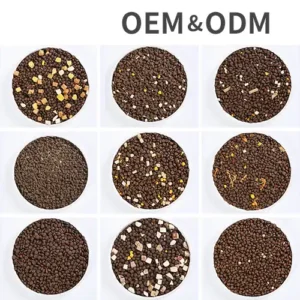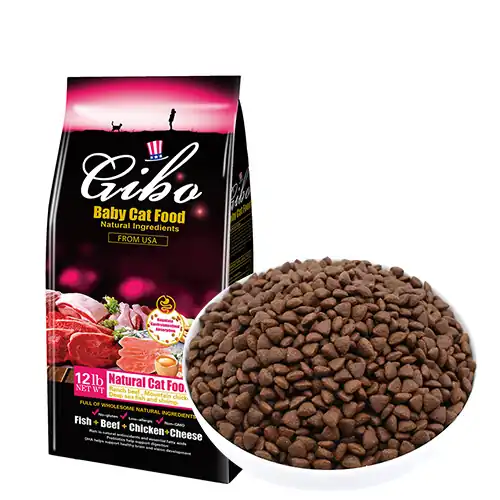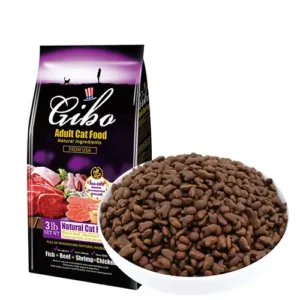What should I feed my kitten? Kittens are just like newborn babies, they not only need to be carefully cared for, but also require special attention to the frequency, amount and timing of feeding, in order for them to develop soundly and grow up quickly. If you want to know more about feeding your kitten, don’t miss this article.
Kitten Feeding 2 Key Points ︱ Feeding Frequency and Timing are Important
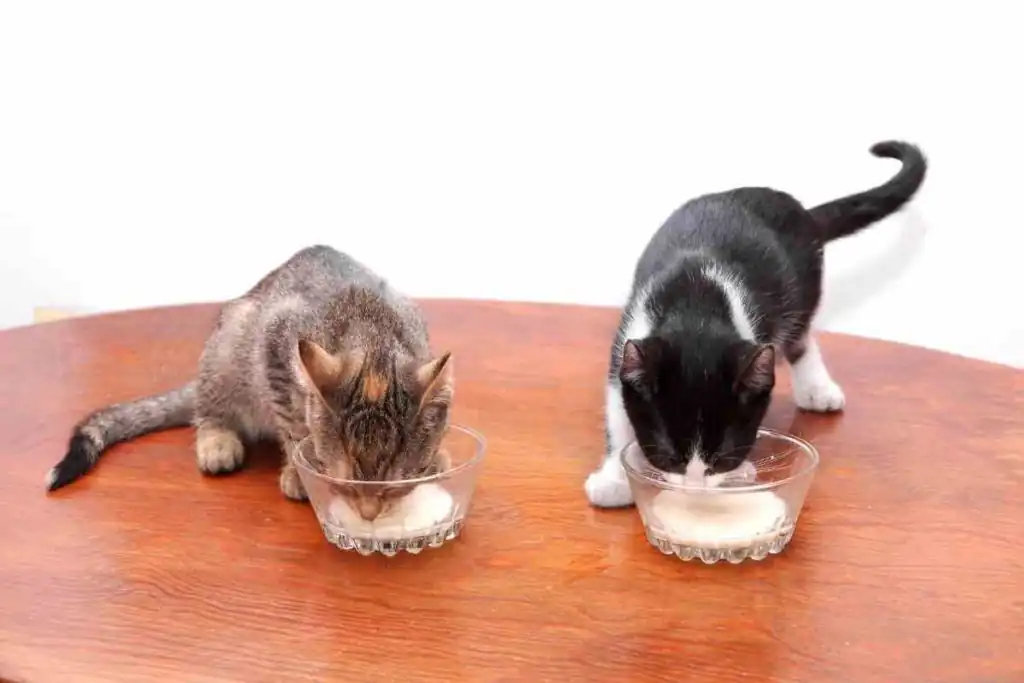
Generally speaking, the best way to feed kittens within a month of birth is to have the mother cat breastfeed them. However, if the mother cat doesn’t have enough milk, or if the kitten has been separated from the mother cat, it is necessary to feed the kitten with a special formula, and there are 2 main points to feeding:
Feed kittens small amounts of food with frequent meals.
Since kittens are still small in size, it can be imagined that their stomachs are also small, so it is recommended that the amount and frequency of feeding be done in small amounts and with multiple meals, so that kittens can eat comfortably, are not overstuffed, and will not be starved.
Feeding time does not arbitrarily disrupt existing habits.
We recommend adjusting the feeding time according to each situation. If the kitten is your own and has been fed with milk powder since birth, it is recommended that it be fed once every 2-3 hours; if the kitten is adopted, it is recommended that it be fed according to the original owner’s customary feeding schedule, so as not to disrupt the original habit at once, in order to prevent the kitten from being unable to adapt to it.
How to feed kittens? Feeding Methods by Stage
What are the differences in feeding kittens at different stages? Below is a table that summarizes how to feed your kitten at each stage of feeding, so if you’re not sure where to start, you can take a look at the following feeding methods.
| Kitten Age | Feeding Food Types | Number of feedings/ Time | Amount of Feeding | Feeding Tips |
| 1.5 months ago | Powdered milk powder for cats | About 2~3 hours/once | About 5~15ml each time | ✅ The amount of food can be increased gradually according to your cat’s appetite. ✅ Kitten bottle can be used for kittens to suckle on their own; or syringe feeding can be used. ✅ Clean and sterilize the feeding utensils before feeding. |
| 1.5~3 months | Still mainly milk powder, However, a small amount of canned cat food or kitten feed can be added. | Feeding about 6 times a day | Let the kitten eat until it is about 80% full at each meal | ✅ If you want to feed kittens special feed, it is recommended to soak them in milk before feeding them. |
| 3~6 months | Kitten Feed | Small and frequent meals are still the mainstay, and the frequency and amount of feeding will vary according to different conditions. | ✅ Try feeding kittens dry kitten food directly so that they can get used to it. | |
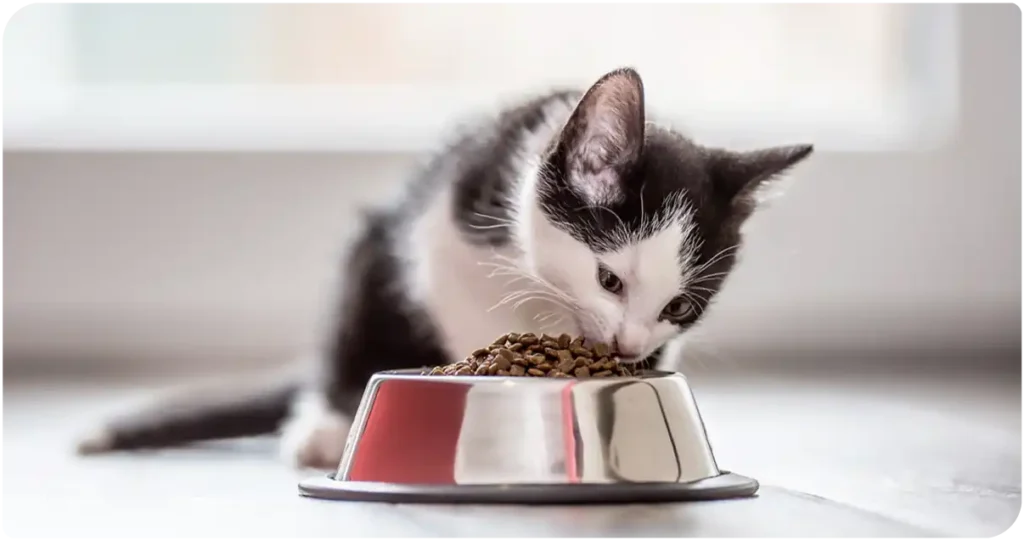
Top 3 Things to Know About Feeding Your Kitten
In addition to the above feeding methods, there are 3 more details to keep in mind when feeding your kitten.
⭐ Don’t Feed Cow’s Milk
I believe that when many people see a cat, they subconsciously think that it “should like” or “should want” to drink cow’s milk, but in fact, cow’s milk is not suitable for kittens! Therefore, when feeding milk to kittens, it is recommended to use milk powder for cats or goat’s milk as a substitute.
⭐ Don’t feed kittens every other meal
Since milk is the staple food of kittens, and milk products are prone to deterioration, it is not recommended to feed kittens every other meal or to feed them cold milk, in order to avoid gastrointestinal discomfort and diarrhea.
⭐ Watch for Weight Changes
If, after caring for your kitten for a period of time, you find that its weight has not changed and it often meows, you may need to pay attention to it, and we recommend that you arrange for a medical consultation as soon as possible so that a professional doctor can diagnose your kitten’s condition for you.
Kitten Feeding FAQ ︱ Become a qualified cat owner must know!
However, we all know It looks easier said than done, but when it comes to actually taking care of your kitten, you may get confused due to some unexpected situations. Therefore, we’ve compiled a list of the top 3 common problems that owners face when taking care of their kittens, to help you prepare in advance so that you won’t be at a loss for help when you encounter a situation!
Q1: How can I tell if my cat is full if it doesn’t stop feeding?
The easiest way to tell is to look at your kitten’s stomach. If the kitten’s stomach is bulging, bloated, or even looks like a small ball, it means that it has eaten too much; if the cat is still meowing after feeding, and its stomach looks flat, it probably hasn’t eaten enough!
Q2: What is the proper temperature for soaking milk?
After the milk has been soaked, it is recommended to test the temperature with the back of your hand. Put 1~2 drops on the back of your hand, and use the temperature where the back of your hand feels warm and comfortable, and does not feel hot or cold.
Q3: When can kittens be weaned from milk and eat solid food?
In fact, after a kitten reaches 4 weeks old, you can give it a taste of food other than milk. It is recommended that you start with canned kitten food, pureed meat, or kitten food softened with milk. If the kitten cannot accept the new flavor, you can combine it with some milk so that it can adapt to it gradually. If the kitten can’t accept the new flavor, it can be fed with some milk so that it can get used to it. If the kitten is not used to solid food, it may eat less, so it is recommended that it be fed with milk so that it doesn’t get hungry.

Therefore, the most important thing to do is to feed your kitten small, frequent meals, and always keep an eye on your kitten to make sure it is not overfed or underfed.

